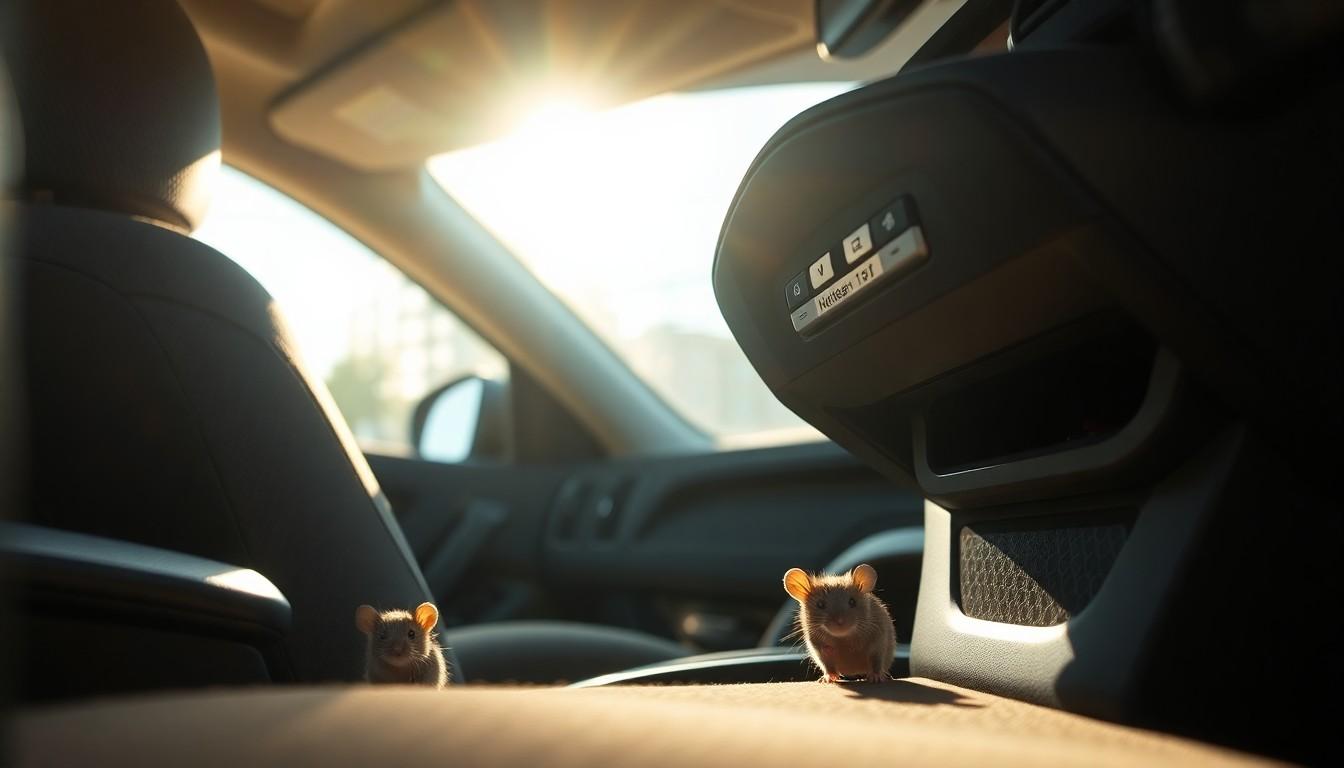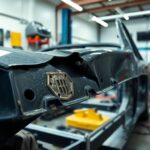Discovering mice in your vehicle is alarming—especially when you’re behind the wheel! We understand the panic that sets in when you spot those tiny unwanted passengers while driving. But how long will these furry stowaways actually remain in your car during a journey?
Most mice won’t voluntarily leave a moving vehicle due to the frightening noise, vibrations, and rapid changes in environment. They’ll typically seek shelter in hidden areas like under seats, in glove compartments, or within the dashboard until the car stops. We’ve researched this common problem thoroughly to help you understand mice behavior in vehicles and find effective answers to remove these persistent pests.
Understanding Mice in Vehicles: An Unexpected Problem
Mice invading vehicles represents a surprisingly common issue that many drivers don’t anticipate until they’re faced with it directly. These small rodents view cars as ideal shelter locations, offering protection from predators, harsh weather, and providing many hiding spots. Cars parked in garages or driveways near vegetation are particularly vulnerable to mouse infestations.
Rodents typically enter vehicles through tiny openings in the undercarriage, wheel wells, or even through vents. Once inside, they don’t limit themselves to cargo areas – mice often make homes in engine compartments, air filters, and under dashboards where they can access the vehicle’s wiring and insulation. The warmth from recently used engines makes these spaces especially attractive during colder months.
The presence of mice in vehicles creates several serious concerns beyond the initial shock. Vehicle damage ranks as the primary issue, with mice chewing through wiring harnesses, plastic components, and upholstery. These destructive habits can lead to expensive repairs and potentially dangerous electrical malfunctions. Also, mice contaminate vehicle interiors with droppings and urine, creating hygiene issues and potential health risks including hantavirus and leptospirosis.
Signs of mice inhabiting your vehicle include unusual odors (particularly a musty, ammonia-like smell), strange noises while driving, visible droppings, chewed materials, or nesting debris consisting of shredded paper, fabric, or plant material. Drivers often first notice these indicators after their vehicle has been parked for several days, though active infestations may continue even during regular use of the car.
Understanding mouse behavior helps explain their persistence in vehicles even during driving. Mice are primarily nocturnal creatures that prefer quiet, undisturbed environments. They’ve evolved as prey animals with strong survival instincts, including freezing when frightened or seeking the deepest, most protected hiding spots available when threatened.
How Mice Enter Cars While Driving
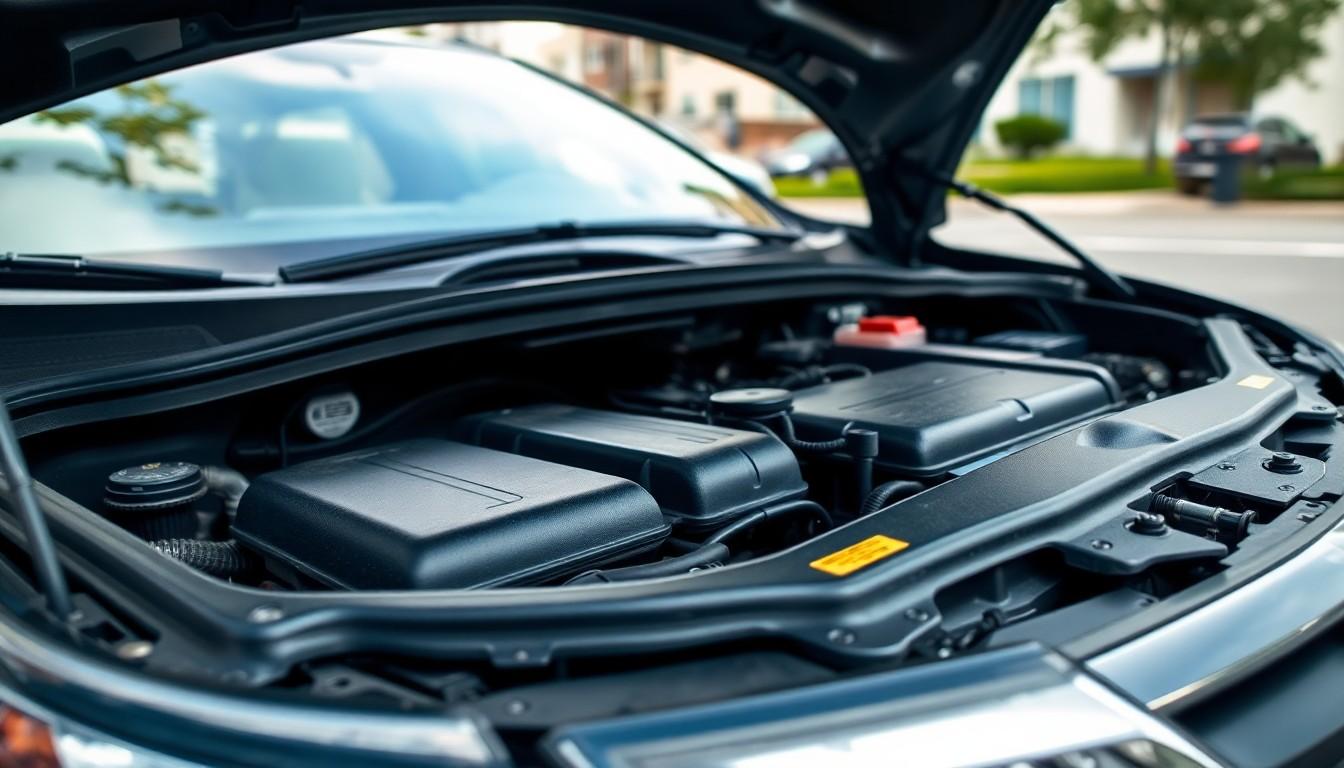
Mice can access vehicles through multiple entry points, even while you’re actively driving. These resourceful rodents don’t necessarily wait for cars to be parked or stored before making their way inside.
Common Entry Points
Engine compartments serve as primary access routes for mice seeking to enter vehicles. These small rodents easily navigate through the engine bay and use this space to access other areas of the car. Ventilation systems function as convenient tunnels, allowing mice to travel from the engine area directly into the vehicle’s interior cabin. Gaps around pedal shafts and steering columns provide sufficient space for mice to squeeze through, even though their seemingly tiny dimensions. Any cracks in sunroofs or windows create perfect opportunities for rodent intrusion, especially in older vehicles with deteriorating seals. Corrosion-caused holes in the undercarriage or body panels offer additional access points that mice readily exploit during their search for shelter.
Timing and Opportunities
Mice don’t limit their car invasions to exact seasons and can enter vehicles year-round. The warmth of an engine proves particularly attractive during colder months, drawing rodents toward this heat source. A vehicle parked for just a few hours provides ample opportunity for mice to enter and establish themselves, meaning even daily-driven cars aren’t immune to infestation. Cars located near potential food sources face increased risk – proximity to bird feeders, dumpsters, or garages containing pet food significantly attracts rodents. Even minor food residue like crumbs inside your vehicle can serve as an open invitation for mice looking for their next meal.
How Long Mice Typically Remain in Moving Vehicles
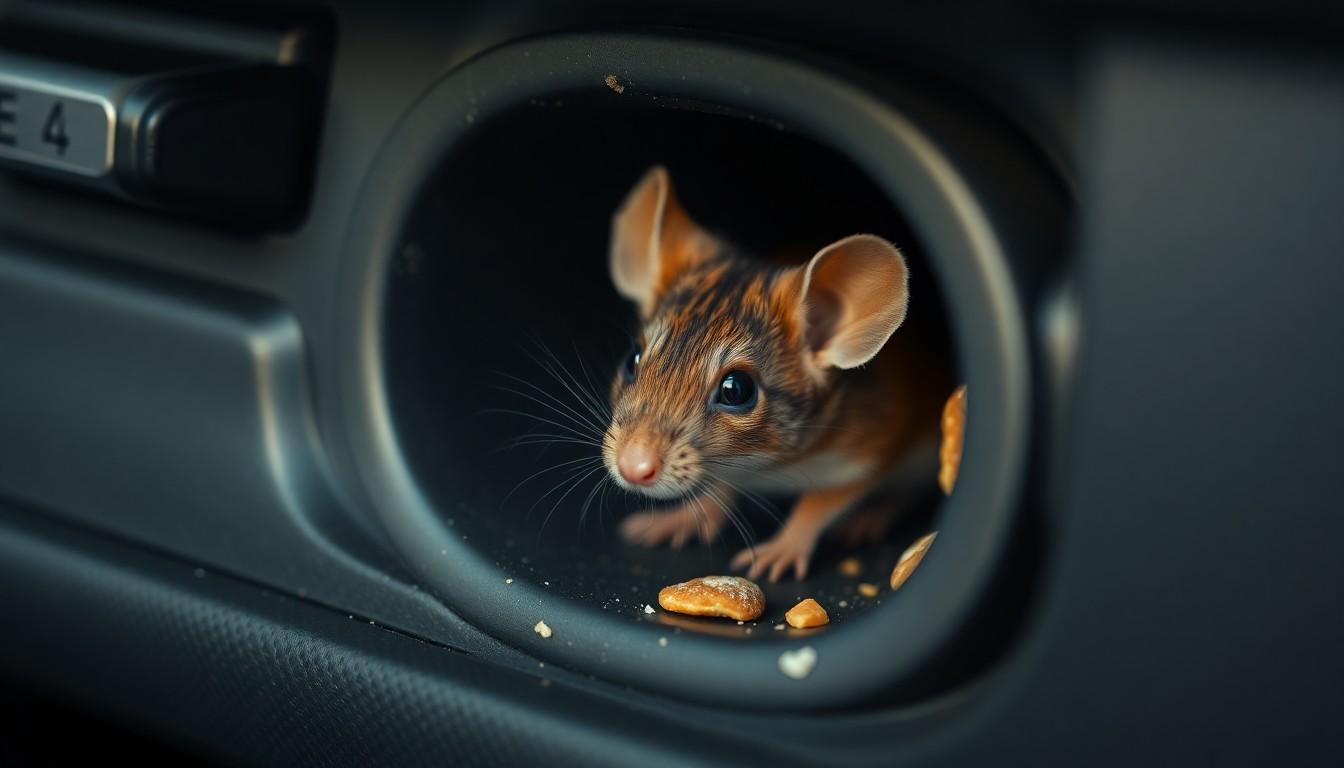
Mice can inhabit vehicles for varying periods, depending on several environmental factors and the vehicle’s condition. These adaptable creatures may hitch a ride for just minutes or settle in for extended journeys when conditions are favorable.
Survival Factors During Travel
The ability of mice to survive in moving vehicles depends on multiple factors that affect their comfort and safety. Hidden areas under the dashboard, inside the glove compartment, or within seat padding provide necessary shelter from human detection and the motion of driving. Access to food sources significantly extends their stay, with crumbs, forgotten snacks, or even soy-based wire insulation serving as sustenance during travel. Engine heat attracts mice especially during colder months, creating a warm microclimate that encourages longer residence. Minimal disturbance from humans allows these rodents to feel secure enough to remain in the vehicle, even during movement.
Average Duration Before Departing
No fixed timeframe exists for how long mice stay in moving vehicles, as their duration varies widely based on exact circumstances. Short-term presence typically lasts only minutes when conditions aren’t ideal or when they’re disturbed by vehicle operation or human activity. Longer-term habitation occurs when mice find favorable conditions—adequate food, appropriate shelter, and limited disturbances—allowing them to remain for hours or even days during continuous travel. Frequently used vehicles generally discourage extended mouse presence due to regular disruption, while rarely driven cars often become more permanent habitats. Environmental extremes like harsh cold or excessive heat can either prompt mice to seek refuge in vehicles or force them to exit, depending on the vehicle’s internal conditions compared to the outside environment.
Health and Safety Concerns of Mice in Cars
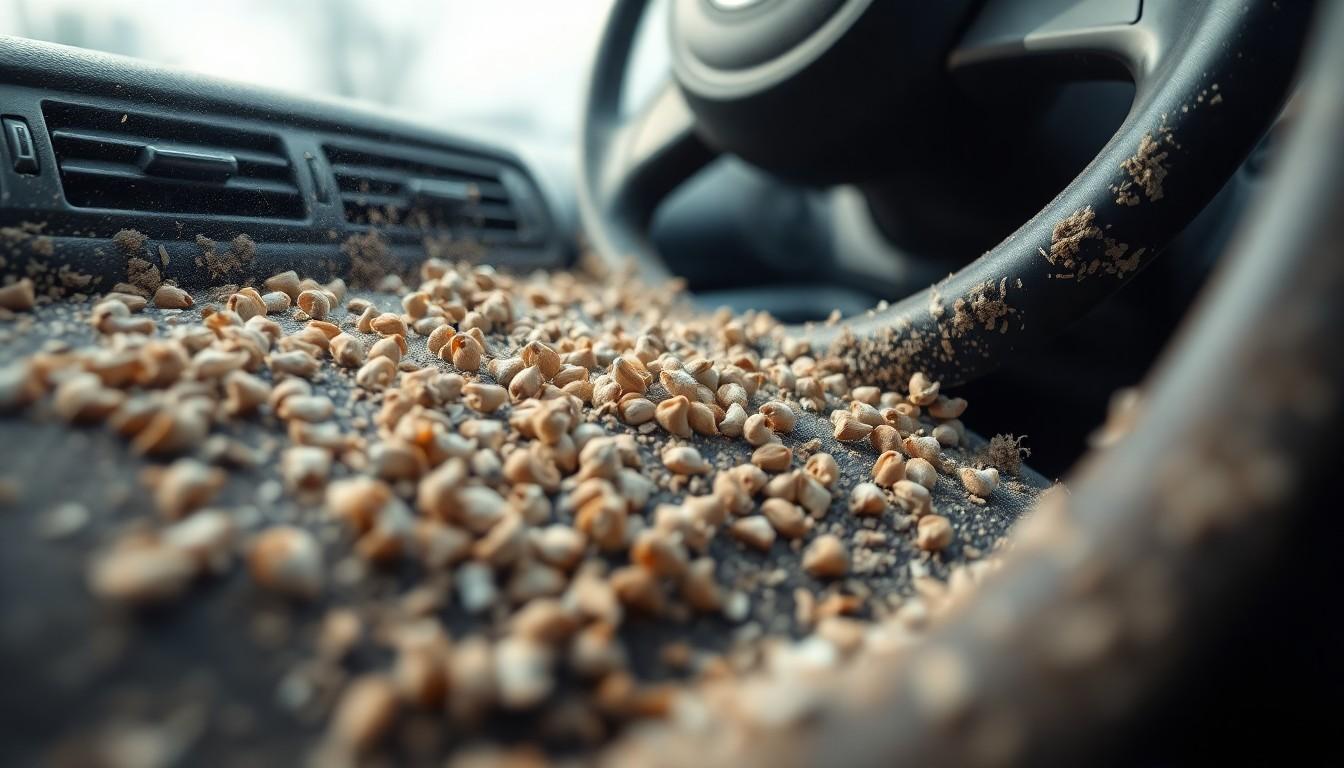
Mice infestations in vehicles create important risks beyond just the unpleasant surprise of spotting one while driving. These unwanted passengers introduce serious health hazards to human occupants and can cause extensive damage to your vehicle’s components.
Disease Transmission Risks
Mice carry several dangerous diseases that can easily transfer to humans through various means. Hantavirus stands out as one of the most concerning health threats, transmitting through contact with mouse droppings, urine, or saliva. These tiny rodents contaminate interior surfaces as they scurry around your vehicle, leaving behind potentially infectious materials on doorhandles, steering wheels, and seats. Air quality becomes compromised when mice inhabit your car’s ventilation system, creating a situation where occupants might unknowingly inhale airborne pathogens circulating through the vents. The confined space of a vehicle’s interior amplifies these health risks, as contaminated particles have limited escape routes and remain concentrated within the cabin.
Vehicle Damage Considerations
Mice cause extensive damage to vehicles through their constant gnawing behaviors and nesting habits. They’re particularly attracted to electrical wiring, creating hazardous situations by chewing through insulation and exposing bare wires. This damage often leads to short circuits, electrical failures, and in severe cases, fires that can destroy the entire vehicle. Repair costs from mouse-related electrical damage frequently run into hundreds or thousands of dollars.
Beyond electrical components, mice target multiple vehicle systems, including air vents, ignition wires, and mechanical parts. They construct elaborate nests using materials torn from your car’s interior, including seat cushioning, carpet fibers, and dashboard insulation. These nests typically appear in hidden areas like under seats, behind glove compartments, and within the heating system. The damage extends to upholstery, with mice creating holes and tears throughout the interior fabrics. During winter months, this destructive behavior intensifies as mice seek warm shelter from harsh weather conditions, making your vehicle particularly vulnerable to extensive damage during colder seasons.
Prevention Methods While Driving
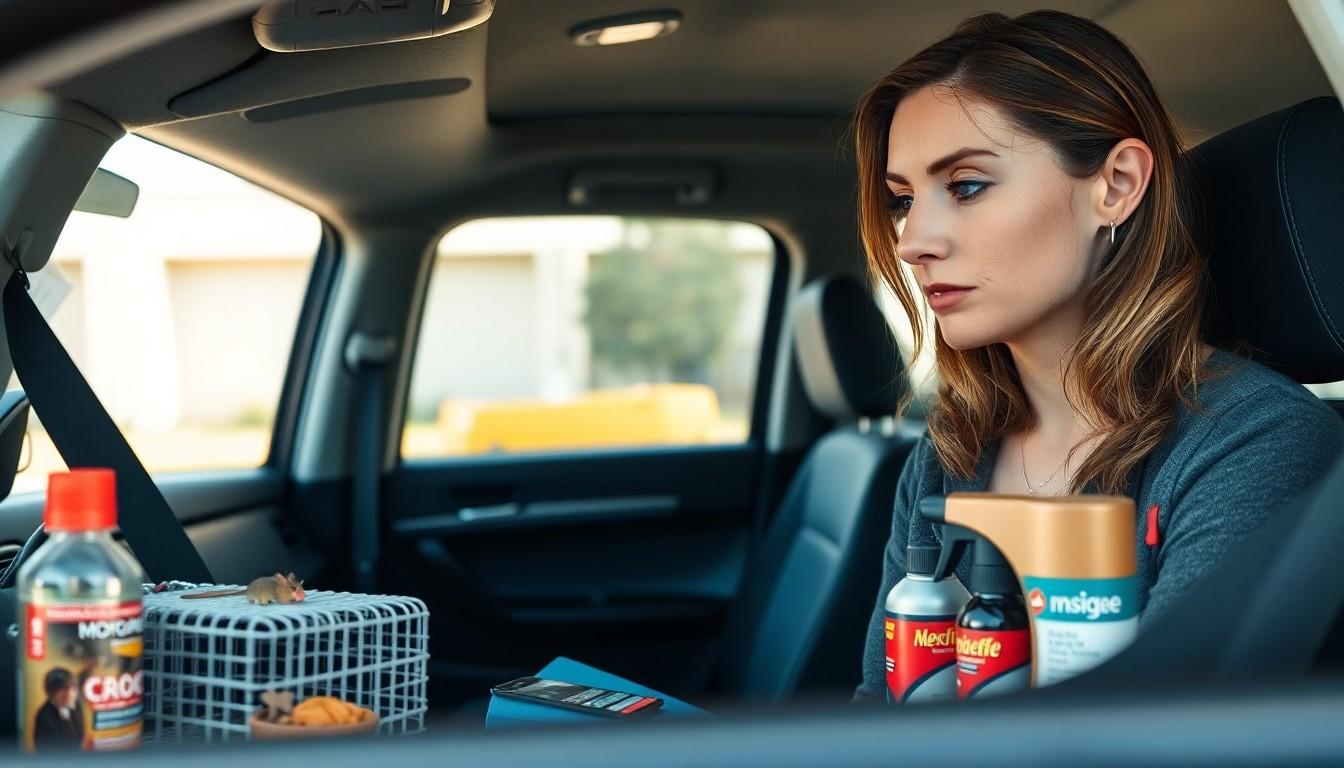
Keeping mice out of your car while on the road requires proactive strategies to make your vehicle less appealing to these unwanted passengers. Here are effective approaches to prevent mice from taking up residence in your car during drives.
Immediate Actions When You Suspect a Mouse
Creating an unwelcoming environment is your first line of defense when you suspect a mouse is in your car. Honking your horn or making other loud noises can frighten mice away from their hiding spots. Pull over to a safe location and thoroughly inspect your vehicle for telltale signs like droppings or nesting materials. Mouse traps baited with peanut butter provide an effective solution for capturing any rodents that have already made their way into your vehicle. Regular cleaning of the passenger area eliminates food crumbs and debris that attract mice in the first place. Placing rodent repellents such as Victor® Scent Repellents inside and around your car creates an additional deterrent against these persistent pests.
Long-Term Prevention Strategies
Maintaining a comprehensive prevention plan protects your vehicle from mice over time. Regular maintenance checks help identify early signs of mice, including chewed wires, droppings, or nesting materials before serious damage occurs. Carefully seal all potential entry points in your garage or parking area to create a rodent-proof environment around your vehicle. Parking choices significantly impact mouse attraction, so avoid leaving your car near undergrowth or in undisturbed environments where rodents typically thrive. Keeping your garage clean and free of clutter eliminates potential nesting sites and food sources that might draw mice to your parking area. Consistent use of rodent repellents and traps ensures your vehicle remains protected against infestations even during periods when you’re not driving. Frequent car use also disrupts potential mouse habitation, as these creatures prefer undisturbed environments for nesting.
Conclusion
Dealing with mice in your vehicle requires prompt action and preventive measures. These unwanted passengers can cause important damage to your car’s electrical system and pose serious health risks while you’re on the road.
By understanding their behavior patterns and implementing our suggested prevention strategies, you’ll create an environment that’s hostile to rodent inhabitants. Regular vehicle maintenance, proper sealing of entry points, and consistent cleaning are your best defenses.
Remember that mice are opportunistic creatures seeking shelter and food. Don’t let your vehicle become their next home. With vigilance and the right approach, you can keep your driving experience mouse-free and maintain both your vehicle’s integrity and your peace of mind.
Frequently Asked Questions
Can mice really get into my car while I’m driving?
Yes, mice can enter your vehicle even while you’re driving. They typically access cars through openings in the undercarriage, wheel wells, ventilation systems, and gaps around pedals or steering columns. Even small cracks in windows or sunroofs can provide entry points, especially in older vehicles. These rodents are exceptionally agile and can squeeze through tiny spaces.
Why do mice choose to live in cars?
Mice view vehicles as ideal shelters because they offer protection from predators and harsh weather conditions. The enclosed spaces provide warmth, especially in engine compartments during colder months. Cars also offer numerous hiding spots and nesting areas, such as under seats, behind dashboards, and in glove compartments. Vehicles parked near food sources like bird feeders or dumpsters are particularly attractive to mice.
What damage can mice cause to my vehicle?
Mice can cause extensive damage to vehicles by chewing on electrical wiring, which may lead to short circuits, electrical failures, and even fires. They also damage upholstery, insulation, and air filters when building nests. The repair costs for mouse-related damage can be significant, often ranging from hundreds to thousands of dollars depending on the extent of the infestation and the systems affected.
What are the signs that mice are in my car?
Signs of mouse infestation include unusual musty odors, strange scratching or scurrying noises (especially when the car is off), visible droppings (small, dark pellets), chewed materials, torn upholstery, and shredded paper in storage areas. You might also notice chewed wiring, nesting materials, or even food crumbs that you didn’t leave behind. Inspect your vehicle thoroughly if you suspect an infestation.
Do mice typically stay in the car while it’s moving?
Most mice prefer to remain hidden during car journeys due to the noise, vibration, and movement. They typically seek refuge in quiet areas like under seats or in the glove compartment. While some mice may exit the vehicle when it stops, others might stay if they’ve established a nest or found food sources. Their duration of stay varies based on environmental factors and the vehicle’s condition.
What health risks are associated with mice in cars?
Mice carry several diseases that can be transmitted to humans, including hantavirus, leptospirosis, and salmonellosis. These diseases can spread through contact with mouse droppings, urine, or saliva, which contaminate surfaces inside your vehicle. Mice also carry parasites like ticks and fleas that can spread additional diseases. The confined space of a vehicle increases exposure risks to these health hazards.
How can I prevent mice from entering my car?
Prevent mice infestations by regularly cleaning your car (removing food and trash), sealing potential entry points, parking away from tall grass and shrubs, using rodent-repellent products (peppermint oil or commercial repellents), setting traps around your parking area, and driving your vehicle frequently. Consider using hood covers or screens over air intakes, and keep engine compartments clean of debris that might attract rodents.
What should I do if I discover mice while driving?
If you discover mice while driving, remain calm and focus on driving safely to your destination. Once stopped in a safe location, open all doors and use loud noises to encourage the mice to leave. Inspect the vehicle thoroughly for nests or remaining rodents. Consider using traps baited with peanut butter for any mice that don’t exit voluntarily. For severe infestations, consult with a professional pest control service.

